
Oracle State Park: Sky Quality Measurements
Posted: 29 April 2014
On Wednesday, 23 April 2014, I visited the headquarters of the International Dark-Sky Association (IDA) in Tucson, Arizona. I picked up a Unihedron "Sky Quality Meter w/Lens" (Model SQM-L) on loan from the National Optical Astronomy Observatory (NOAO). I will use the meter to take readings of the night sky quality at Oracle State Park. I will also take some all-sky photos from the Park. As part of the loan, I agreed to take comparison sky quality readings using the "Dark Sky Meter" iOS app and submit them to IDA. The SQM readings and photos will be part of the "International Dark Sky Park" (IDSP) Nomination Package that will be submitted to IDA in July 2014. Unfortunately, cloudy skies, gusty winds (to 30 MPH), and even some rain (0.14") kept me from visiting the Park at night.
During the daytime on Sunday, 27 April, I represented the Oracle Dark Skies Committee (ODSC), which I chair, at the "Music in the Park" at Oracle State Park and did public outreach on our plans. About 50 Park visitors attended.
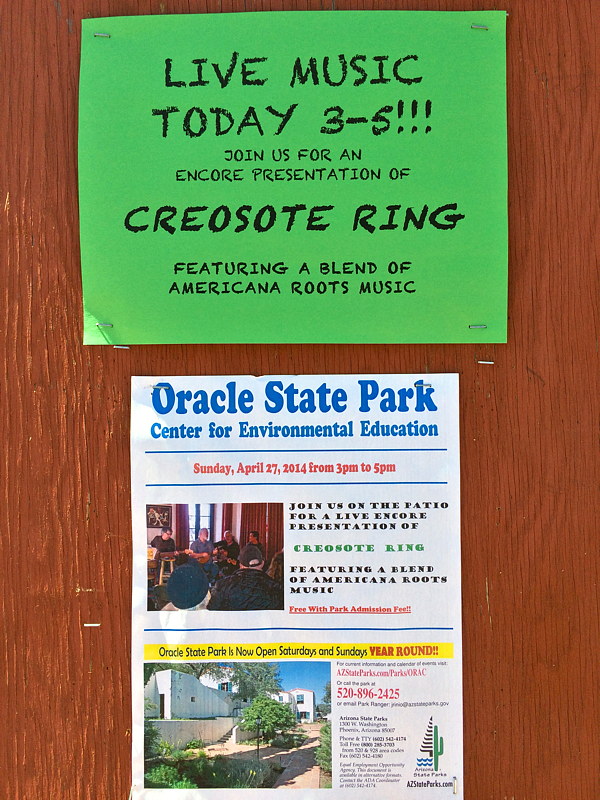
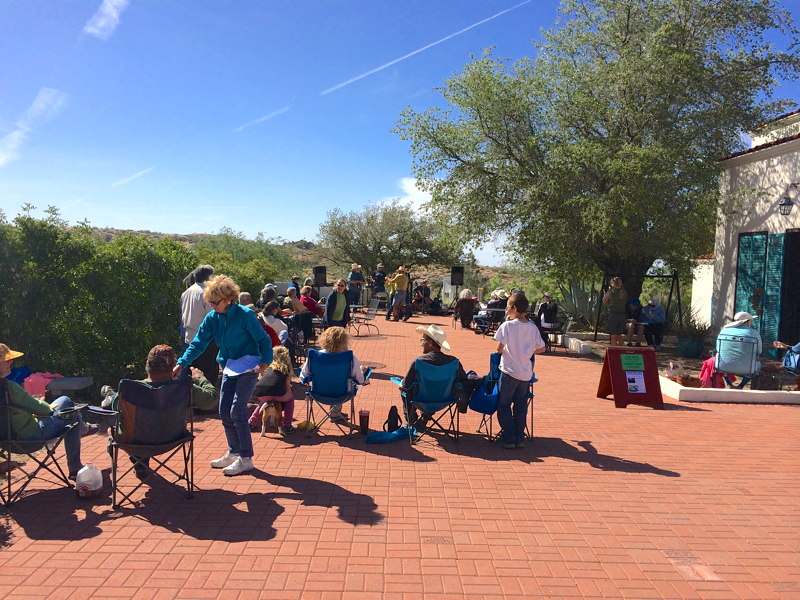
Many visitors stopped by my table:
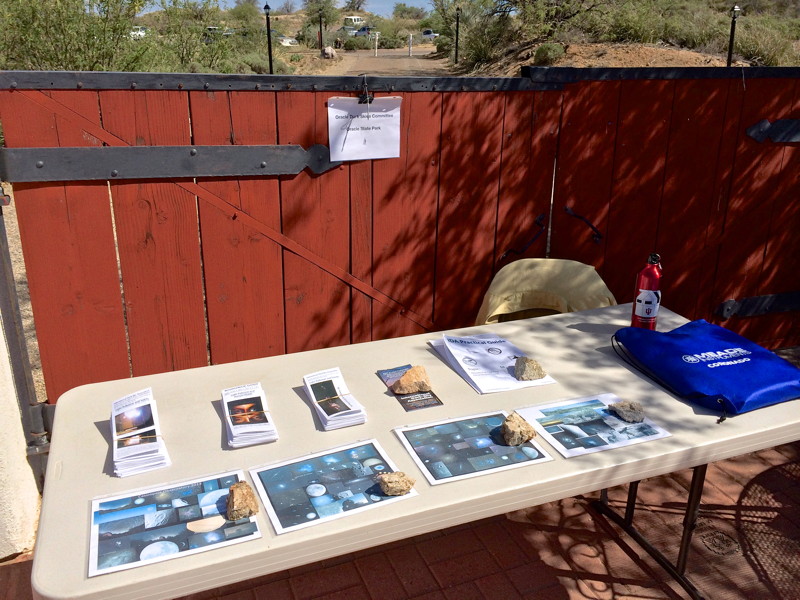
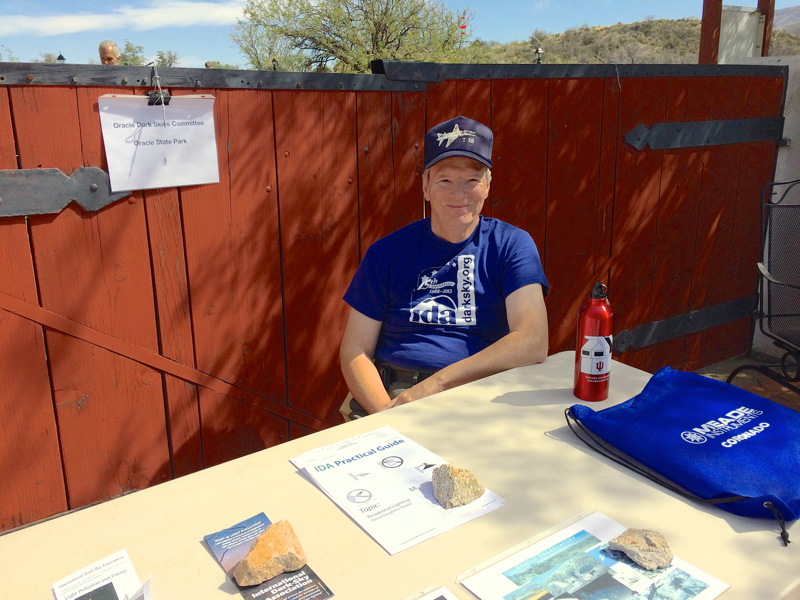
I handed out IDA brochures on light pollution to many of the visitors. Everyone I spoke to was very excited about our Dark Skies effort and some even volunteered to help in anyway they could.
The sky finally cleared on Monday, 28 April, and so I spent several hours at Oracle State Park after the sun set. When not doing SQM readings I did some observing using my Celestron 12x70 binoculars to see just how good the viewing was from the Park (it was very good).
During the night, I set up at three separate locations in the Park. These daytime panoramic photographs (approximately 180°, taken last week using an iPhone 5s) show the view and terrain at each location:
Arizona Trail Walk-In parking lot
(west to north to east):

Arizona Trail Walk-In parking lot
(east to south to west):

Group Use Area
(west to north to east):

Group Use Area
(east to south to west):

Kannally Ranch House parking lot
(west to north to east):

Kannally Ranch House parking lot
(east to south to west):

This photo shows the all-sky photography setup:
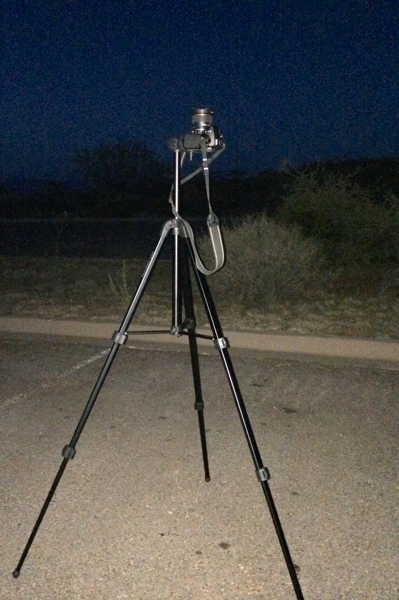
After the end of astronomical twilight (2032 MST), I took my first SQM readings at the Arizona Trail Walk-In parking lot. I then took this all-sky photo using my Nikon D7000 DSLR with Rokinon 8mm 180° Fisheye Lens, f/5, 60 seconds, ISO 1600:
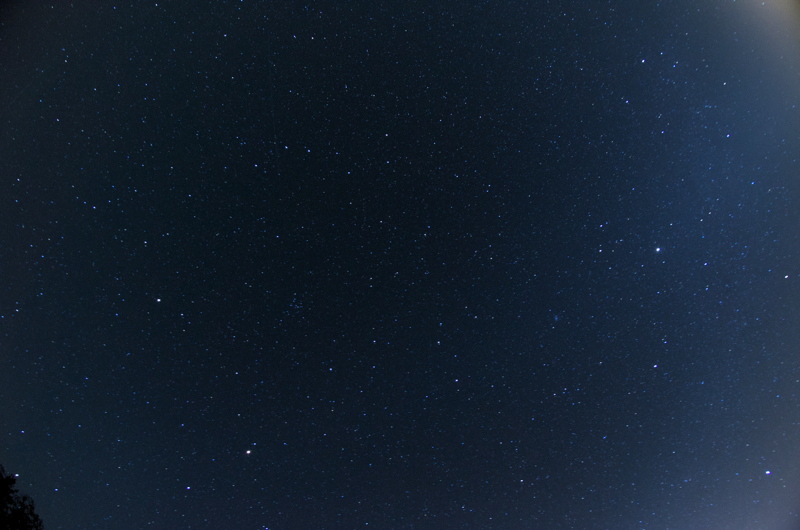
North is at top, west at the right. The light dome from Phoenix and Casa Grande are in the upper right corner; light dome from Tucson and Oro Valley in the lower right corner. The Big Dipper is above center, with bright Jupiter in the constellation of Gemini center right.
These two (cropped) fisheye photos give a better view of the small light domes. The top photo was taken towards the northwest and shows Casa Grande and Phoenix, along with two much smaller light domes. The bottom photo shows the light dome from Tucson and Oro Valley.
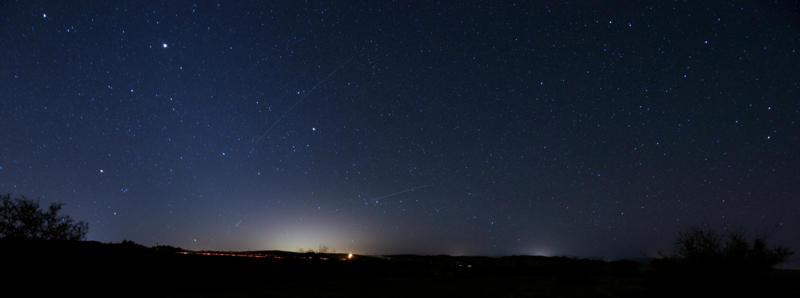

All of the light domes that are visible from Oracle State Park are not too intrusive into the sky, although we certainly wish they were not there at all.
I also took sky quality measurements and photos from the Park "Group Use" and Kannally Ranch House area. These will be included in the final report.
This table shows the SQM values:
| Time | Location | SQM-L | DSM |
| 2039 MST | Walk-In | 21.24 | 21.98 |
| 2138 MST | Group Use | 21.25 | 21.99 |
| 2230 MST | Ranch House | 21.34 | 21.07 |
| 0003 MST | Ranch House | 21.40 | 21.82 |
| 0011 MST | Group Use | 21.36 | 21.07 |
| 0027 MST | Walk-In | 21.34 | 21.48 |
Larger numbers indicate a darker sky. Two things are evident from the readings. (1) Dark Sky Meter (DSM) usually reports a reading that is too dark, but not consistently. (2) Sky darkness improves after some businesses and residents turn off their lights later in the night.
This SQM-to-visual star magnitude conversion chart (from Unihedron) shows the IDA "International Dark Sky Park" designation levels:
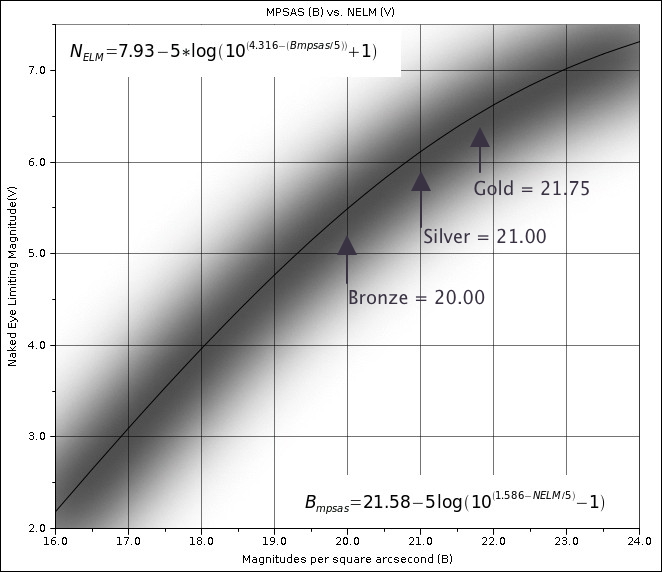
Oracle State Park is easily within the "Silver" status.
After completing the final SQM reading, I left the Park at 0033 MST.
I will be doing more night sky quality measurements before the waxing moon gets too bright. I plan to take one of my Meade ETX telescopes on the next visit to the Park to do some observing.
I added a new "Photomontages" album showing some selected Cassiopeia Observatory photo montages from over the years. Check it out.
Comments are welcome using Email. If you are on Twitter you can use the button below to tweet this report to your followers. Thanks.
Cassiopeia Observatory Home Page